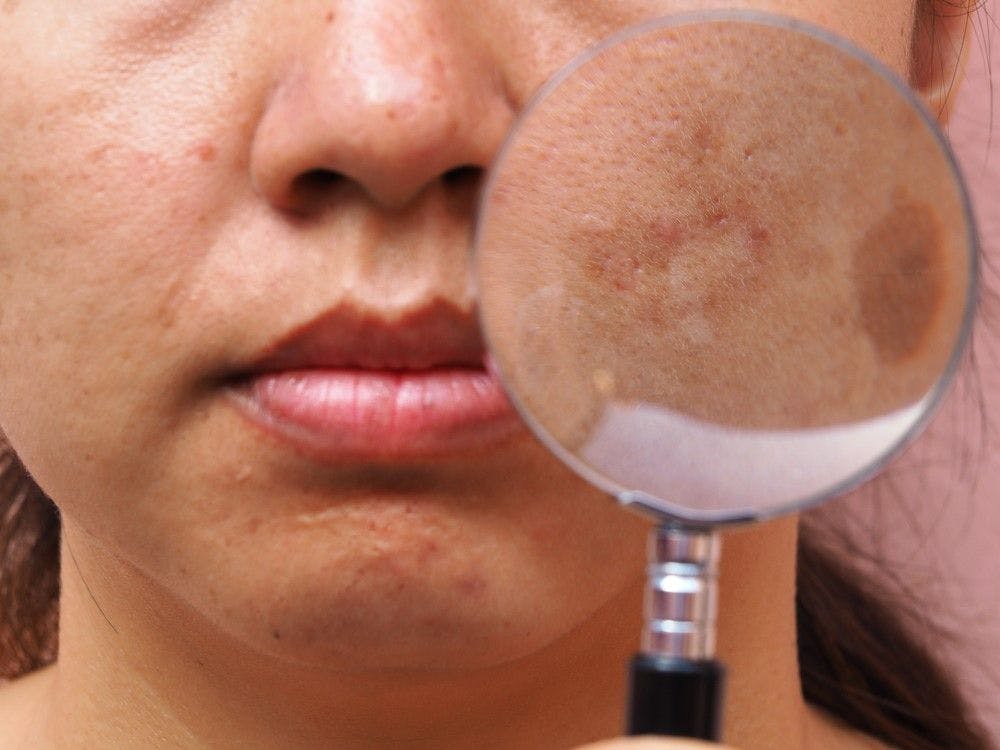- Acne
- Actinic Keratosis
- Aesthetics
- Alopecia
- Atopic Dermatitis
- Buy-and-Bill
- COVID-19
- Case-Based Roundtable
- Chronic Hand Eczema
- Drug Watch
- Eczema
- General Dermatology
- Hidradenitis Suppurativa
- Melasma
- NP and PA
- Pediatric Dermatology
- Pigmentary Disorders
- Practice Management
- Precision Medicine and Biologics
- Prurigo Nodularis
- Psoriasis
- Psoriatic Arthritis
- Rare Disease
- Rosacea
- Skin Cancer
- Vitiligo
- Wound Care
Publication
Article
Dermatology Times
Inpatient derm consults for cellulitis improve outcomes
Author(s):
Dermatology consultations for hospitalized patients with cellulitis may reduce morbidity, superfluous antibiotic use and healthcare costs.
Misha A. Rosenbach, M.D.

Megan H. Noe, M.D., MPH

Two recent studies indicate that timely dermatology consults in an inpatient setting can have a positive impact on the outcomes of patients with cellulitis or presumed cellulitis, helping to reduce patient morbidity, the length of hospital stay, as well as the unnecessary use of antibiotics, lowering overall healthcare costs. This data among a backdrop of growing literature underscores the clinical importance and cost-effective value of dermatology consults in the hospital setting.
Although considered to be a relatively common bacterial infection of the skin, cellulitis can have many mimickers that can fool the unsuspecting physician, often leading to misdiagnoses and possibly further to prolonged and inappropriate therapy.
In one randomized clinical study in patients hospitalized with presumed cellulitis1, researchers found that a dermatology consult that occurred within 24 hours of hospitalization led to a significant decrease in length of intravenous antibiotic treatment. In addition to helping physicians improve wound care recommendations and address modifiable risk factors for cellulitis in study patients, the trial also showed dermatology specialists identified pseudocellulitis in over 30% of cases, underscoring the high rate of misdiagnoses of cellulitis in primary care medicine.
Another randomized clinical trial in patients with presumed cellulitis evaluated the impact of early dermatology consultation on both clinical and economic outcomes2. Results showed early dermatology consultation could identify those patients without cellulitis and decrease the length of their hospital stay. In addition, dermatology consultation was associated with significant financial savings for each case of presumed cellulitis. When extrapolating the data nationally, researchers found that dermatology consultation could lead to a reduction of 97,000 to 256,000 inpatient days, 34,000 to 91,000 patients avoiding unnecessary antibiotic treatment, amounting up to $210 million in net cost savings annually.
Cellulitis is more difficult to diagnose than many realize because there are mimickers of cellulitis that are fairly common ranging from stasis dermatitis to allergic contact dermatitis, and most of them are more commonly seen in dermatology practices. Therefore, primary care physicians and internists might not have as much experience with some of the mimickers of cellulitis, which may explain the frequency of misdiagnoses seen.
“The question is what constitutes a gold standard diagnosis confirming cellulitis. Most cases of cellulitis are culture negatives and there isn’t any definitive imaging in many cases that can be used to hone in on the correct diagnosis. A lot of times, the diagnosis is made based on upon a constellation of clinical features and clinician judgement in the individual case scenario,” said Misha A. Rosenbach, M.D., associate professor of dermatology and director of the inpatient dermatology service at the hospital of the University of Pennsylvania, Philadelphia. “In the dermatology literature there are more and more well-done studies and publications demonstrating that cellulitis seems to be a fairly common misdiagnosis,” Dr. Rosenbach added.
According to Dr. Rosenbach, getting the diagnosis right from the start can help avoid the unnecessary use of antibiotics and their associated costs, and potential drug reactions, antibiotic resistances, and antibiotic complications in patients. In view of the high frequency of cellulitis being misdiagnosed in primary care facilities, Dr. Rosenbach suggests that primary care physicians slow down and think twice when mulling over potential differential diagnoses before jumping to a quick diagnosis of cellulitis, especially when carefully considering the particular presentation of cellulitis symptoms.
In addition to a heightened vigilance on the part of primary care specialists, Dr. Megan Noe believes that part of the solution to this problem lies in the hands of dermatologists.
“I think that dermatologists need to be willing and able to see hospital consults, including things that dermatologists believe to be common or ordinary such as cellulitis. If dermatologists are willing and able to participate in hospital care, I think they will gain the respect of the primary care hospital team and the hospital team will reach out to the dermatologist more. Then dermatologists can become more integrated members of the hospital team,” said Megan H. Noe, M.D., MPH, Department of Dermatology, University of Pennsylvania, Philadelphia.
The movement for dermatologists whose primary academic focus is inpatient dermatology is fairly new, Dr. Rosenbach said. Currently, there are many academic centers that have physicians who are considered full time inpatient consult dermatologists, allowing them to perform their hospital duties more efficiently than classic working models.
“Coordinating between a busy practice and hospital consultations can be logistically challenging in a community setting. Implementing creative strategies such as the use of tele-dermatology technology to either triage patients or to allow dermatologists to cover a wider area can be helpful in streamlining patient care,” Dr. Noe said.
References:
1Ko LN, et al. Effect of dermatology consultation on outcomes for patients with presumed cellulitis: a randomized clinical trial. JAMA Dermatol. 2018 Feb 16. doi:10.1001/jamadermatol.2017.6196.
2Li, DG, et al. Outcomes of early dermatology consultation for inpatients diagnosed with cellulitis. JAMA Dermatol. 2018 Feb 16. doi:10/1001/jamadermatol.2017.6197.

Newsletter
Like what you’re reading? Subscribe to Dermatology Times for weekly updates on therapies, innovations, and real-world practice tips.















